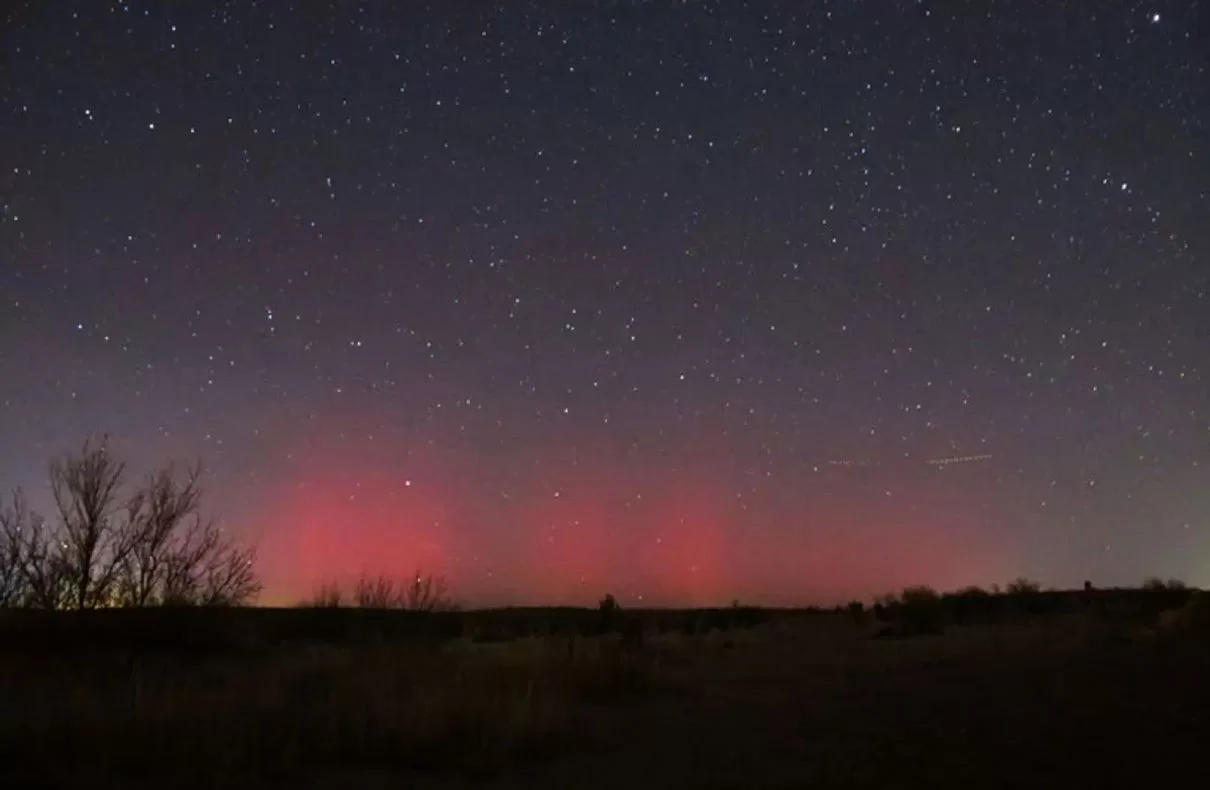The Northern Lights, also known as the Aurora Borealis, have been spotted in Texas. The lights were seen as far south as the Texas Panhandle and northern Texas.
The Northern Lights are a rare occurrence in the southern half of the US. They were caused by a pair of solar eruptions and a powerful geomagnetic storm. The lights were seen in the following locations:
- Colorado
- Texas
- Lubbock, Texas
- Spokane, Washington
- Riverton, Wyoming
- Salt Lake City, Utah
- Aberdeen, South Dakota
- DeKalb, Illinois
- Shenandoah National Park, Virginia
- Bull Run Mountain, Virginia
The Northern Lights are usually seen near the Earth’s north pole. They are caused by solar storms, which send energy and particles into Earth’s atmosphere.
The particles interact with gases in the atmosphere, creating the light displays. The colors of the lights are due to the composition of Earth’s atmosphere.
The ethereal lights are created as charged particles are ejected from the sun’s upper atmosphere, in the form of solar wind, and slam into the Earth’s magnetic field, according to Space.com.
As Earth’s magnetic field redirects the particles toward the poles (there are southern lights, too), the interaction with our atmosphere causes an emission of light.
The colors produced are determined by the chemical composition of Earth’s atmosphere. For example, oxygen molecules emit a green light, while nitrogen molecules produce red light.
The strength of the solar energy hitting Earth’s atmosphere dictates how far south the Aurora Borealis is seen. Corbin Voges, chief meteorologist for KVII-TV in Amarillo, captured portions of the sky glowing red just before 8 p.m. on Friday.
“When I heard they could see red pillars in Wichita, Kansas tonight, I ran a few miles outside of Amarillo to see for myself,” Voges wrote. “Sure enough, the [northern lights] were visible with a camera on the northern horizon.”
Photographer Camille Davis snapped a photo of the red-tinged sky filled with glistening stars near Amarillo, Texas. “Thought it was a total failure, but got home and maybe I did catch something?” Davis captioned the photo.
Wesley Luginbyhl, a storm and landscape photographer, also photographed the celestial spectacle at 7:40 p.m. from the small, rural town of Vega, Texas, located just 30 minutes west of Amarillo. This is the third time Luginbyhl has seen the aurora borealis in Texas this year, previously photographing the natural phenomenon in March and April.
“The pillars were strong a few minutes before this, but it has one of the best meteors I have ever captured,” Luginbyhl wrote on social media. He was also able to film the pillars dancing in a video. “A lot of things are said about the Texas sky,” he wrote,”but dancing auroras are definitely a new 2023 addition.”


